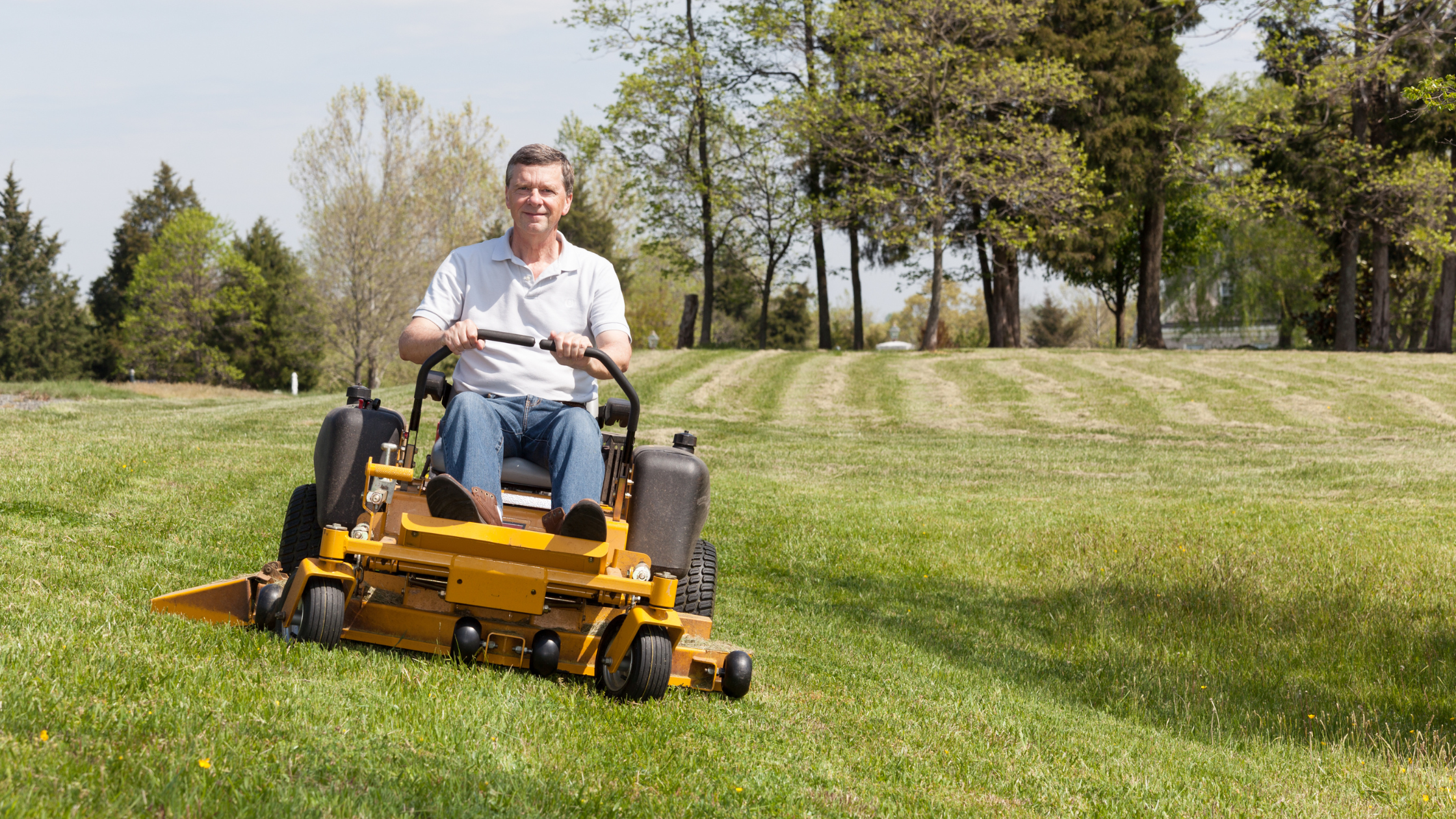Mowing is the most basic and frequently performed lawn care practice. Proper mowing is essential in the maintenance of quality turf and can radically impact the effectiveness of the fertility programs we provide.
Cutting Height
Grass, like all other plants, relies on photosynthesis to survive and grow. Close mowing reduces the amount of leaf area available for photosynthesis, limiting the grass’s ability to produce energy. As cutting height drops, lawns become less tolerant of environmental stressors and more prone to invasion by weeds and insects. Cutting too short will also stunt root development resulting in a shallow root system.
Although a closely cut lawn can be maintained successfully, it will require more frequent watering and fertilization to compensate. At Mainely Grass, we recommend mowing to 4 inches or the highest level that meets the aesthetic and intended use of your lawn.
Mowing Frequency
Many of us are used to cutting our lawns on a set schedule. That works out great for our calendars (or our children’s chores!), but it is not how grass grows throughout the changing seasons. It grows most vigorously in the spring when temperatures are warming but not yet hot, then slows during the heat of the summer, and picks back up in the early fall as it prepares for winter. How fast your lawn is growing should ideally determine how frequently it gets mowed. In order to avoid stressing the turf, no more than one-third of the grass shoot should be cut at any one time–this is commonly referred to as the “1⁄3 Rule”. For example, if a lawn is being mown to 4 inches (like we recommend), it should not be allowed to grow higher than 6 inches before it is mown again.
Cutting off more than one-third of the shoot in one mowing puts severe stress on the grass. Somewhat counterintuitively, your grass will respond by re-growing its shoots faster while sacrificing root growth and depleting its energy stores. Mowing high, and following the 1⁄3 Rule will help keep your turf healthy and hardy, and keep you from mowing all the time!
Clipping Removal
Unless an excessive amount of clippings remain on the lawn after a cut (because of infrequent mowing, for example), there is no need to remove clippings by bagging or raking. In fact, clippings are a valuable source of nutrients and organic matter. Mulching your clippings will recycle up to 25% of the nitrogen in your grass and help to improve the structure of your soil and in turn, the health of your turf (especially if your soil is sandy or low in organic matter).
Contrary to popular belief, mulching clippings does not contribute to increased thatch formation. Clippings are primarily composed of easily degradable compounds which break down rapidly and do not accumulate.
If the lawn is mown when wet, clippings may clump together and make removal–or even a “double cut” to further mulch the cut grass–necessary. Mowing when the lawn is dry will help to prevent clumping, but please don’t abandon the 1⁄3 Rule just because the grass is wet!
Mowing Equipment Maintenance & Patterns
The most important thing to remember for mower maintenance is to keep the blades as sharp as possible. Dull blades will tear the grass rather than sheer it, resulting in unnecessary injury to your turf. This tearing opens up more surface area which can allow disease to enter and also weakens the grass making it more susceptible to insect attack. It will also generally brown the tips of your grass making your lawn look somewhat burnt and unappealing.
Some pros can do amazing things with mowing patterns, and if you are one of them, enjoy! If that isn’t you, just remember to vary the direction you mow to avoid creating horizontal growth (called grain) over time. The easiest way to do this is to mow at right angles on alternate mowings, but any variability will do.
Happy Mowing!
